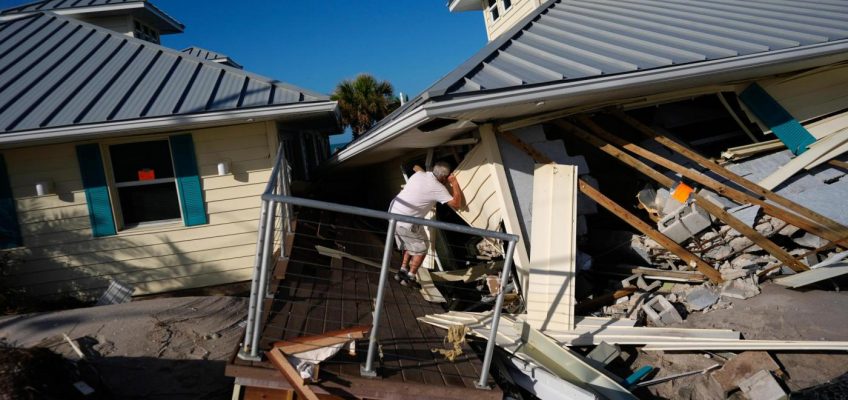By ALEXA ST. JOHN, Associated Press
Weather experts are warning that hurricane forecasts will be severely hampered by the upcoming cutoff of key data from U.S. Department of Defense satellites, the latest Trump administration move with potential consequences for the quality of forecasting.
The National Oceanic and Atmospheric Administration said it would discontinue the “ingest, processing and distribution” of data collected by three weather satellites that the agency jointly runs with the Defense Department. The data is used by scientists, researchers and forecasters, including at the National Hurricane Center.
It wasn’t immediately clear why the government planned to cut off the Defense Meteorological Satellite Program’s microwave data by Monday. The Defense Department referred questions to the Air Force, which referred them to the Navy, which did not immediately provide comment. NOAA did not immediately respond to a message.
Unlike traditional weather satellites, the microwave data helps peer under a regular image of a hurricane or a tropical cyclone to see what is going on inside the storm, and it is especially helpful at night.
Related Articles
Republican plan for nationwide private school vouchers deemed in violation of Senate rules
Democrats are trying to figure out what to do about John Fetterman. One of them is stepping up
Pardon applications are being carefully crafted with one man in mind: Donald Trump
Rural schools feel the pinch from Trump administration’s cuts to mental health grants
Family sues over US detention in what may be first challenge to courthouse arrests involving kids
The news is especially noteworthy during the ongoing hurricane season and as lesser storms have become more frequent, deadly and costly as climate change is worsened by the burning of fossil fuels.
Microwave imagery allows researchers and forecasters to see the center of the storm. Experts say that can help in detecting the rapid intensification of storms and in more accurately plotting the likely path of dangerous weather.
“If a hurricane, let’s say, is approaching the Gulf Coast, it’s a day away from making landfall, it’s nighttime,” said Union of Concerned Scientists science fellow Marc Alessi. “We will no longer be able to say, OK, this storm is definitely undergoing rapid intensification, we need to update our forecasts to reflect that.”
Other microwave data will be available but only roughly half as much, hurricane specialist Michael Lowry said in a blog post. He said that greatly increases the odds that forecasters will miss rapid intensification, underestimate intensity or misplace the storm.
That “will severely impede and degrade hurricane forecasts for this season and beyond, affecting tens of millions of Americans who live along its hurricane-prone shorelines,” he said.
University of Miami hurricane researcher Brian McNoldy called the loss of data “alarmingly bad news” in a post on Bluesky.
“Microwave data are already relatively sparse, so any loss — even gradual as satellites or instruments fail — is a big deal; but to abruptly end three active functioning satellites is insanity.”
NOAA and its National Weather Service office have been the target of several cuts and changes in President Donald Trump’s second term. The Department of Government Efficiency gutted the agency’s workforce, local field offices and funding.
Already, hurricane forecasts were anticipated to be less accurate this year because weather balloons launches have been curtailed because of the lack of staffing.
“What happened this week is another attempt by the Trump administration to sabotage our weather and climate infrastructure,” Alessi said.
Alexa St. John is an Associated Press climate reporter. Follow her on X: @alexa_stjohn. Reach her at ast.john@ap.org.
The Associated Press’ climate and environmental coverage receives financial support from multiple private foundations. AP is solely responsible for all content. Find AP’s standards for working with philanthropies, a list of supporters and funded coverage areas at AP.org.


Leave a Reply